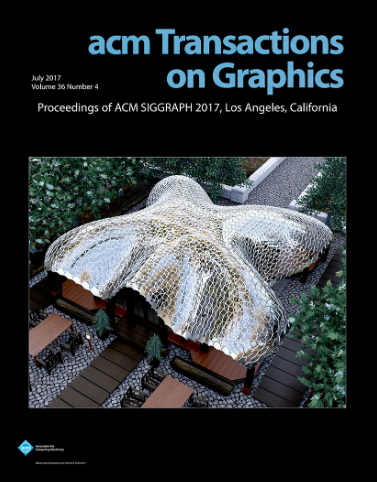Diffusing Winding Gradients (DWG): A Parallel and Scalable Method for 3D Reconstruction from Unoriented Point Clouds
IF 9.5
1区 计算机科学
Q1 COMPUTER SCIENCE, SOFTWARE ENGINEERING
引用次数: 0
Abstract
This paper presents Diffusing Winding Gradients (DWG) for reconstructing watertight surfaces from unoriented point clouds. Our method exploits the alignment between the gradients of screened generalized winding number (GWN) field–a robust variant of the standard GWN field– and globally consistent normals to orient points. Starting with an unoriented point cloud, DWG initially assigns a random normal to each point. It computes the corresponding sGWN field and extract a level set whose iso-value is the average GWN values across all input points. The gradients of this level set are then utilized to update the point normals. This cycle of recomputing the sGWN field and updating point normals is repeated until the sGWN level sets stabilize and their gradients cease to change. Unlike conventional methods, DWG does not rely on solving linear systems or optimizing objective functions, which simplifies its implementation and enhances its suitability for efficient parallel execution. Experimental results demonstrate that DWG significantly outperforms existing methods in terms of runtime performance. For large-scale models with 10 to 20 million points, our CUDA implementation on an NVIDIA GTX 4090 GPU achieves speeds 30-120 times faster than iPSR, the leading sequential method, tested on a high-end PC with an Intel i9 CPU. Furthermore, by employing a screened variant of GWN, DWG demonstrates enhanced robustness against noise and outliers, and proves effective for models with thin structures and real-world inputs with overlapping and misaligned scans. For source code and additional results, visit our project webpage: https://dwgtech.github.io/.扩散缠绕梯度(DWG):一种从无方向点云进行三维重建的并行和可扩展方法
本文介绍了用于从无定向点云重建防水表面的扩散卷绕梯度(DWG)。我们的方法利用筛选广义缠绕数(GWN)场(标准 GWN 场的稳健变体)梯度与全局一致法线之间的一致性来确定点的方向。从未定向的点云开始,DWG 最初会为每个点分配一个随机法线。它计算相应的 sGWN 场,并提取一个等值为所有输入点 GWN 平均值的水平集。然后利用该水平集的梯度更新点法线。这种重新计算 sGWN 场和更新点法线的循环会一直重复,直到 sGWN 水平集稳定下来,其梯度不再变化。与传统方法不同,DWG 不依赖于线性系统的求解或目标函数的优化,这简化了其实现过程,并提高了其高效并行执行的适用性。实验结果表明,DWG 在运行性能方面明显优于现有方法。对于 1,000 万到 2,000 万点的大型模型,我们在英伟达™(NVIDIA®)GTX 4090 GPU 上的 CUDA 实现速度比 iPSR(一种领先的顺序方法)快 30-120 倍。此外,通过采用 GWN 的筛选变体,DWG 对噪声和异常值的鲁棒性得到了增强,并证明对具有薄结构的模型以及具有重叠和错位扫描的实际输入有效。有关源代码和其他结果,请访问我们的项目网页:https://dwgtech.github.io/。
本文章由计算机程序翻译,如有差异,请以英文原文为准。
求助全文
约1分钟内获得全文
求助全文
来源期刊

ACM Transactions on Graphics
工程技术-计算机:软件工程
CiteScore
14.30
自引率
25.80%
发文量
193
审稿时长
12 months
期刊介绍:
ACM Transactions on Graphics (TOG) is a peer-reviewed scientific journal that aims to disseminate the latest findings of note in the field of computer graphics. It has been published since 1982 by the Association for Computing Machinery. Starting in 2003, all papers accepted for presentation at the annual SIGGRAPH conference are printed in a special summer issue of the journal.
 求助内容:
求助内容: 应助结果提醒方式:
应助结果提醒方式:


